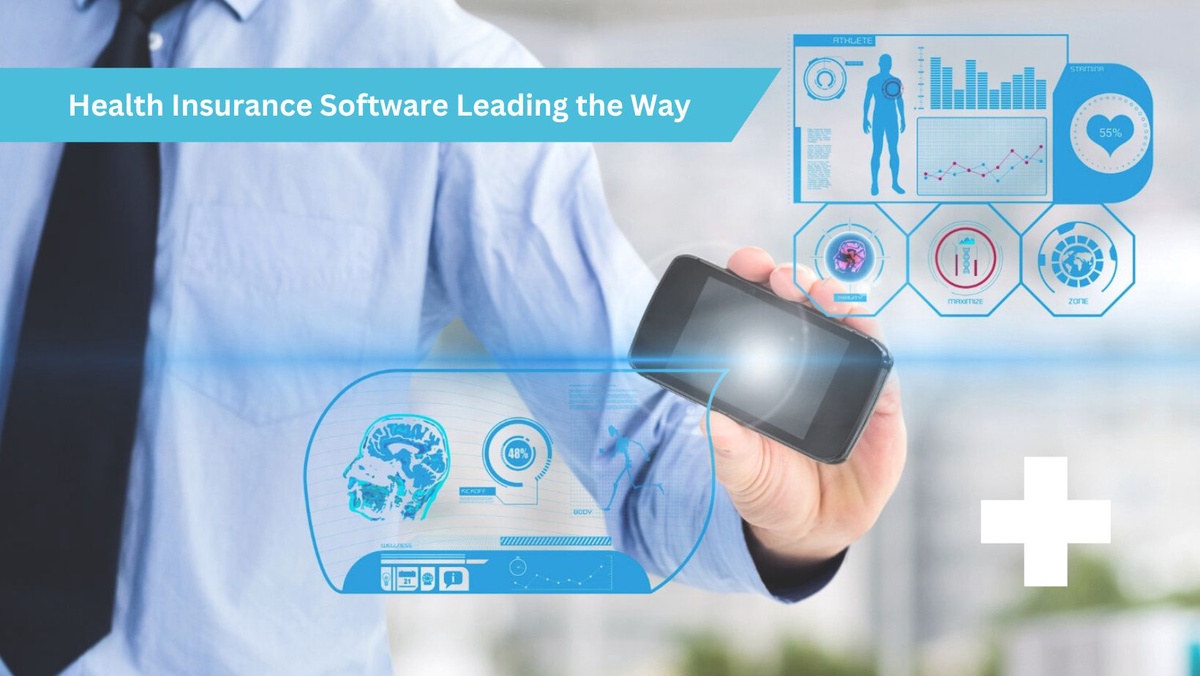Software solutions are playing a vital role in transforming the healthcare landscape, offering a variety of benefits to both healthcare providers and patients. Healthcare software promotes coordinated care and improved patient outcomes by enabling seamless communication and collaboration among healthcare teams.
In this article, first, we will understand what health insurance software is and for what purpose it is developed, and some real-world examples of how healthcare organizations benefit from it.
Introduction of Health Insurance Software
Healthcare insurance software marks a significant milestone in the healthcare industry, revolutionizing how insurance processes are managed. Health insurance software is a comprehensive suite of digital tools and applications designed to streamline and automate various insurance-related tasks, such as enrollment, claims processing, billing, and policy administration.
Health insurance software enables insurers to make informed decisions, optimize operational efficiencies, and offer more personalized and accessible coverage options to policyholders, leveraging technology and data analytics. It also improves care coordination and speeds claims resolution by facilitating seamless communication between healthcare providers and insurers. As a result, health insurance software not only simplifies administration but also improves the quality of healthcare services. Ultimately, this benefits both the insurance provider and the individual seeking coverage.
It is possible that a healthcare organization might not have a team of in-house developers who could assist in building such software. Thus, consulting an Enterprise software development company is recommended to help you build health insurance software that meets your requirements.
Purpose of Health Insurance Software Solutions
Health insurance software solutions aim to optimize insurance operations, enhance customer experiences, and promote better healthcare outcomes by leveraging technology and data-driven insights. It plays a crucial role in transforming the health insurance industry, making it more efficient, accessible, and responsive to the needs of policyholders and healthcare providers.
The purpose of health insurance software solutions is multifaceted and aims to improve various aspects of the industry. Some essential purposes include:
- Streamlining Administrative Processes: Health insurance software automates and streamlines various administrative tasks, such as enrollment, policy management, and claims processing, reducing paperwork and manual interventions and ultimately increasing operational efficiency.
- Enhancing User Experience: By providing user-friendly interfaces and self-service options, health insurance software enhances the overall experience for policyholders, making it easier to access information, manage their policies, and submit claims.
- Improving Claims Processing: Health insurance software expedites the claims processing workflow, reducing the time it takes to assess and reimburse claims, which leads to higher customer satisfaction and improved provider-insurer relationships.
- Data Management and Analytics: Health insurance software allows for efficient storage and management of policyholder data, claims data, and other relevant information. This data can be analyzed to gain valuable insights into customer behavior, trends, and risks, enabling data-driven decision-making.
- Fraud Detection and Prevention: Advanced health insurance software can incorporate fraud detection algorithms, which help identify suspicious activities and prevent fraudulent claims, safeguarding the interests of both insurers and policyholders.
- Personalization and Customization: Health insurance software enables insurers to offer personalized coverage options, tailor-made to individual needs and preferences, enhancing insurance products' overall value and attractiveness.
- Coordinating Care: Some health insurance software solutions integrate with electronic health records (EHR) systems and healthcare provider networks, facilitating seamless communication and care coordination between insurers and healthcare providers and improving patient outcomes.
- Compliance and Reporting: Health insurance software helps insurers comply with regulatory requirements and reporting standards by automating data collection and generating accurate reports.
Real-world Examples of Organizations Benefiting from Health Insurance Software
These real-world examples demonstrate how health insurance software has enabled organizations to optimize operations, enhance customer experiences, and deliver policyholders more efficient and personalized healthcare services. By leveraging technology and data-driven insights, these companies have positioned themselves at the forefront of the tech revolution in healthcare insurance.
Numerous organizations have experienced significant benefits from adopting health insurance software solutions. Here are some real-world examples:
- UnitedHealth Group, one of the largest health insurance providers globally, implemented health insurance software to streamline its claims processing and enrollment procedures. The software's automated features reduced the time it took to process claims, resulting in faster reimbursement for healthcare providers and improved customer satisfaction.
- Cigna, a leading global health insurance company, utilized health insurance software to enhance user experience and personalized services for its policyholders. The software's user-friendly interfaces allowed policyholders to manage their coverage online, access personalized health resources, and communicate with healthcare providers more efficiently.
- Anthem, Inc., a major health insurer in the United States, integrated health insurance software with electronic health records (EHR) systems used by healthcare providers. This integration improved data sharing, care coordination, and medical billing accuracy, resulting in smoother interactions between insurers and healthcare facilities.
- Aetna, a prominent health insurance provider, deployed health insurance software to analyze large datasets and identify trends in patient health. By leveraging data analytics, Aetna could design innovative insurance products, implement preventive care initiatives, and personalize coverage based on individual risk profiles.
- Oscar Health, a tech-focused health insurance company, utilized health insurance software to provide members with user-friendly mobile applications. The app offers easy access to policy information, virtual consultations with doctors, and medication management tools, fostering a more seamless and convenient healthcare experience.
- Allianz Care, a global health insurance provider, implemented health insurance software to simplify the claims submission process for international policyholders. The software allowed for straightforward claims submission and supported multiple currencies and languages, facilitating smoother interactions for their diverse customer base.
- Bajaj Allianz, an insurance company in India, leveraged health insurance software to streamline policy renewals and enhance customer engagement. The software's automated reminders and personalized policy renewal options improved retention rates and customer satisfaction.
Conclusion
In a nutshell, the tech revolution in healthcare is propelling us towards a future of boundless possibilities, with health insurance software emerging as a critical catalyst for positive change. As stakeholders in this dynamic industry, the encouragement is straightforward: seize this transformative opportunity and embrace these cutting-edge solutions.
Insurers can optimize operations, provide personalized coverage, and foster customer loyalty, while healthcare providers can streamline communication and elevate patient care. For policyholders, health insurance software brings convenience and accessibility at their fingertips, empowering them to take control of their health and well-being. Together, let us wholeheartedly embrace and leverage health insurance software to build an efficient, patient-centric healthcare ecosystem based on technology, compassion, and innovation. By joining forces and embracing these solutions, we can lead the way toward a healthier and brighter future for all.


No comments yet